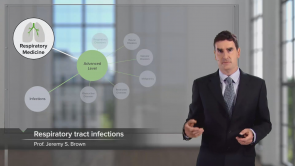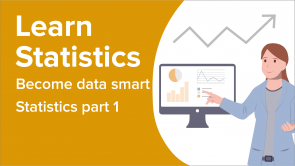Introduction to Probability

Über den Vortrag
Der Vortrag „Introduction to Probability“ von David Spade, PhD ist Bestandteil des Kurses „Statistics Part 1“. Der Vortrag ist dabei in folgende Kapitel unterteilt:
- Introduction to Probability
- Modeling Probability
- The Complement Rule
- Independent Events
- Probability Pitfalls
Quiz zum Vortrag
What is a property of a random phenomenon?
- In a random phenomenon, the possible outcomes of a trial are known, but it is unknown what will happen on any particular trial.
- In a random phenomenon, it is known what will happen on any given trial.
- In a random phenomenon, the possible outcomes of a trial are unknown.
- In a random phenomenon, the possible outcomes of a trial are known, and it is also known what will happen on each trial.
- In a random phenomenon, it is known what will happen in only one of the many given trials.
What is NOT true about the Law of Large Numbers?
- If an event A has probability 0.9, and it has not occurred in the first 10 trials of a random phenomenon, it is sure to occur on the 11th.
- In order for the Law of Large Numbers to apply, each trial must be carried out independently.
- If we repeat a random phenomenon over and over again, the relative frequency of the occurrence of a particular outcome or event settles around the probability of an event.
- The Law of Large Numbers applies only to long-run relative frequencies.
- The Law of Large Numbers does not apply to short-run relative frequencies.
What is not true about probability?
- If A and B are two events, then P (A) + P (B) must be smaller than 1.
- If the probability of an event is 0, the event never occurs.
- If the probability of an event is 1, the event always occurs.
- If S is the sample space, then P ( S ) = 1.
- If the probability of an event is 0.5, the event sometimes occurs.
Suppose A, B, and C are events such that P (A) = 0. 1, P(B) = 0.2 and P(C) = 0.5. Suppose also that A, B and C are disjoint events. What is the probability that none of them happens?
- The probability that none of these events happens is 0.2.
- The probability that none of these events happens is 0.8.
- The probability that none of these events happens is 0.
- The probability that none of these events happens is 1.
- The probability that none of these events happens is 0.4.
Let A and B be two events. What is NOT something that can be done using the rules of probability?
- If A and B are disjoint events, the probability that both of them will occur can be found by multiplying P(A) and P(B).
- If A and B are independent, the probability that both will occur can be found by multiplying P(A) and P(B).
- If A and B are disjoint events, the probability that one of them will occur can be found by adding P(A) and P(B).
- The P(A) and P(B) must have a value between 0 and 1.
What CANNOT be a probability?
- 8
- 0
- 1
- 0.5
- 0.2
What is the probability that a person would live forever?
- 0
- 1
- 0.5
- 0.2
- 8
What is the probability that a person would NEVER live forever?
- 1
- 0
- 0.5
- 0.2
- 8
What is the probability of getting a 1 when a 6-sided dice is thrown?
- 1/6
- 0
- 2/13
- 1/15
- 2/85
If the probability of event (A) occurring is 0.4, then the probability of event (A) not occurring is what?
- 0.6
- 0.5
- 0.4
- 0.3
- 0.2
Kundenrezensionen
5,0 von 5 Sternen
| 5 Sterne |
|
1 |
| 4 Sterne |
|
0 |
| 3 Sterne |
|
0 |
| 2 Sterne |
|
0 |
| 1 Stern |
|
0 |
good overview and a clear into to the topic good speaker





